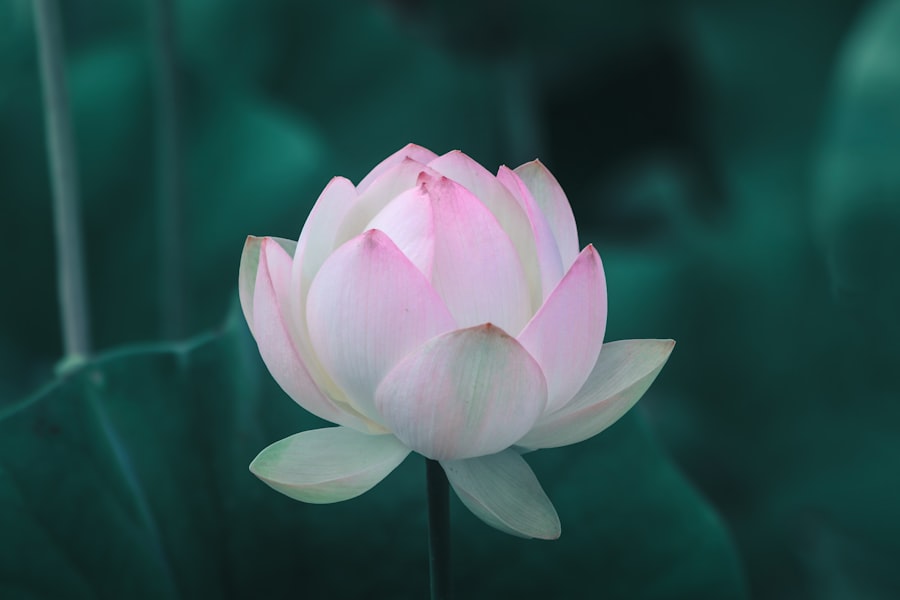Embodied spirituality invites you to explore the profound connection between your physical body and your spiritual essence. It emphasizes that spirituality is not merely an abstract concept confined to the mind or spirit; rather, it is deeply rooted in the physical experience of being human. This approach encourages you to recognize that your body is a vessel through which you can experience the divine, and it plays a crucial role in your spiritual journey.
By acknowledging the body as a sacred space, you can cultivate a more holistic understanding of your existence, one that integrates both the physical and spiritual dimensions of life. As you delve into embodied spirituality, you may find that it challenges traditional notions of spirituality that often prioritize the mind over the body. This perspective invites you to engage with your senses, emotions, and physical sensations as pathways to deeper spiritual insights.
You might begin to notice how your body responds to different environments, experiences, and practices, allowing you to develop a more intimate relationship with yourself. By embracing this holistic approach, you can foster a sense of wholeness that enriches your spiritual life and enhances your overall well-being.
Key Takeaways
- Embodied spirituality emphasizes the connection between the mind, body, and spirit, and the importance of integrating these elements in spiritual practices.
- Connecting with the body is a key aspect of embodied spirituality, involving practices such as yoga, dance, and somatic experiencing to cultivate awareness and presence.
- Mindfulness and meditation are essential practices in embodied spirituality, helping individuals to cultivate inner peace, self-awareness, and a deeper connection to the present moment.
- Movement plays a crucial role in embodied spirituality, allowing individuals to express and connect with their emotions, release tension, and cultivate a sense of vitality and aliveness.
- Rituals and ceremonies are powerful tools for nurturing the soul in embodied spirituality, providing a sense of meaning, connection, and transcendence in everyday life.
Connecting with the Body
To truly connect with your body, you must first cultivate awareness of its presence and sensations. This process begins with mindfulness—an intentional focus on the here and now. You can start by taking a few moments each day to simply sit in silence and tune into your body.
Notice how it feels against the surface you are sitting on, the rhythm of your breath, and any areas of tension or relaxation. This practice of grounding yourself in the present moment allows you to develop a deeper understanding of how your body communicates with you. As you deepen this connection, consider exploring various forms of body awareness practices such as yoga, tai chi, or even dance.
These activities not only promote physical health but also encourage you to listen to your body’s needs and desires. You may find that engaging in these practices helps you release pent-up emotions or stress, allowing for a more profound spiritual experience. By honoring your body as a source of wisdom, you can create a nurturing environment for your spiritual growth.
Practices for Mindfulness and Meditation

Mindfulness and meditation are essential tools for cultivating embodied spirituality. These practices allow you to quiet the mind and tune into the sensations of the body, fostering a deeper connection between the two. You might begin with simple mindfulness exercises, such as focusing on your breath or observing the sensations in your hands and feet.
As you practice, aim to let go of judgment and simply observe what arises within you. This non-judgmental awareness can lead to profound insights about yourself and your spiritual path. Meditation can take many forms, from guided sessions to silent contemplation.
You may find it helpful to incorporate visualization techniques that connect you with your body’s energy centers or chakras. By envisioning light or warmth flowing through these areas, you can enhance your sense of embodiment and spiritual alignment. Regular meditation practice not only calms the mind but also strengthens your connection to your physical self, allowing for a more integrated spiritual experience.
The Role of Movement in Embodied Spirituality
| Aspect | Metrics |
|---|---|
| Physical Movement | Yoga, Tai Chi, Dance |
| Mental Movement | Meditation, Mindfulness |
| Emotional Movement | Expressive Arts Therapy, Breathwork |
| Social Movement | Community Rituals, Group Chanting |
Movement is a vital aspect of embodied spirituality, as it allows you to express and experience your spiritual essence through the physical body. Engaging in movement-based practices can help you release stagnant energy and emotions while fostering a sense of freedom and joy. Whether through dance, walking in nature, or practicing martial arts, movement becomes a form of prayer or meditation that connects you with the divine.
As you explore different forms of movement, pay attention to how they make you feel both physically and spiritually. You might discover that certain movements resonate more deeply with your soul, allowing for greater expression and connection. For instance, dancing freely to music can evoke feelings of ecstasy and liberation, while gentle stretching can promote relaxation and mindfulness.
By incorporating movement into your spiritual practice, you create a dynamic relationship between body and spirit that enhances your overall well-being.
Nurturing the Soul through Rituals and Ceremonies
Rituals and ceremonies serve as powerful tools for nurturing your soul within the framework of embodied spirituality. These practices provide structure and intention, allowing you to honor significant moments in your life or connect with the sacred on a deeper level. You might create personal rituals that resonate with your beliefs and values—lighting candles during meditation, creating an altar with meaningful objects, or celebrating seasonal changes through ceremonies.
Participating in communal rituals can also foster a sense of belonging and connection with others who share similar spiritual paths. Whether it’s a full moon gathering or a seasonal festival, these shared experiences can deepen your understanding of embodied spirituality while strengthening your relationships with others.
Exploring the Sacred in Everyday Life

Embodied spirituality encourages you to find the sacred in everyday moments rather than reserving spiritual experiences for specific times or places. This perspective invites you to cultivate mindfulness in daily activities such as cooking, cleaning, or even commuting. As you engage in these tasks, try to bring awareness to the sensations involved—feel the warmth of water on your hands while washing dishes or notice the rhythm of your breath as you walk.
By infusing everyday life with mindfulness and intention, you can transform mundane moments into opportunities for spiritual connection. You might find that simple acts become sacred rituals when approached with reverence and presence. This practice not only enhances your spiritual journey but also fosters gratitude for the beauty inherent in daily life.
Healing and Self-Care in Embodied Spirituality
Healing is an integral part of embodied spirituality, as it allows you to address emotional wounds and cultivate self-compassion. Engaging in self-care practices is essential for nurturing both body and spirit. You might explore various healing modalities such as energy work, massage therapy, or herbal remedies that resonate with you.
These practices can help release blockages and promote balance within your physical and energetic systems. Incorporating self-care into your routine also means prioritizing rest and relaxation. Allow yourself time to recharge by engaging in activities that bring you joy—whether it’s spending time in nature, reading a book, or practicing creative expression.
By honoring your needs and nurturing yourself holistically, you create a solid foundation for spiritual growth and healing.
Embracing the Senses in Spiritual Practices
Your senses play a crucial role in embodied spirituality, as they allow you to experience the world around you fully. Engaging all five senses can deepen your spiritual practices and enhance your connection to the divine. For instance, consider incorporating fragrant essential oils into your meditation space or using sound healing instruments like singing bowls during rituals.
These sensory elements can create an atmosphere conducive to spiritual exploration. You might also explore how different tastes nourish not only your body but also your spirit. Preparing meals with intention—choosing fresh ingredients and expressing gratitude for their nourishment—can transform eating into a sacred act.
By embracing your senses in spiritual practices, you open yourself up to new dimensions of experience that enrich your journey.
Integrating Embodied Spirituality into Daily Routine
To fully embrace embodied spirituality, it’s essential to integrate its principles into your daily routine. Start by setting aside dedicated time for mindfulness practices each day—whether through meditation, yoga, or simply taking mindful walks outdoors. You may find it helpful to create a morning ritual that sets a positive tone for the day ahead or an evening practice that allows for reflection and gratitude.
Additionally, consider how you can infuse moments of mindfulness throughout your day-to-day activities. Whether it’s taking deep breaths while waiting in line or practicing gratitude before meals, these small shifts can significantly impact your overall sense of connection to yourself and the world around you.
Cultivating a Connection to Nature and the Earth
Nature serves as a powerful teacher in embodied spirituality, reminding you of the interconnectedness of all living beings. Spending time outdoors allows you to reconnect with the earth’s rhythms and cycles while fostering a sense of belonging within the larger web of life. You might find solace in walking barefoot on grass or meditating under a tree—these experiences ground you in the present moment while deepening your connection to nature.
Consider incorporating nature-based rituals into your spiritual practice as well. Whether it’s celebrating seasonal changes through ceremonies or simply expressing gratitude for the beauty around you, these acts can enhance your sense of connection to both nature and spirit. By honoring the earth as sacred, you cultivate a deeper appreciation for its gifts while nurturing your own spiritual growth.
Embodied Spirituality in Community and Relationships
Finally, embodied spirituality flourishes within community and relationships. Engaging with others who share similar values can provide support and inspiration on your spiritual journey. You might seek out groups focused on mindfulness practices or attend workshops that explore embodied spirituality together.
These shared experiences create opportunities for connection while fostering a sense of belonging. In addition to community gatherings, consider how relationships can serve as mirrors for your own growth. Engaging authentically with others allows for deeper connections that nurture both body and spirit.
By practicing open communication and vulnerability within relationships, you create space for healing and transformation—both individually and collectively. In conclusion, embodied spirituality invites you to explore the intricate relationship between body and spirit through various practices that nurture both aspects of yourself. By connecting with your body, embracing movement, engaging in rituals, and cultivating mindfulness in everyday life, you can deepen your spiritual journey while fostering healing and self-care along the way.
Ultimately, this holistic approach encourages you to embrace every moment as an opportunity for connection—both with yourself and the world around you.
Embodied spirituality practices emphasize the integration of physical movement and spiritual awareness, fostering a deeper connection between the mind, body, and spirit. These practices often include activities such as yoga, tai chi, and mindful walking, which encourage individuals to experience spirituality through their physical presence and sensations. An insightful article that delves into the nuances of embodied spirituality can be found on Unplugged Psych, where the author explores how these practices can enhance personal growth and emotional well-being. For more information, you can read the full article by visiting Unplugged Psych.
🧠 😶🌫️ The Detachment Trap: Why “Spiritual Bypassing” Will Never Lead to Enlightenment
FAQs
What are embodied spirituality practices?
Embodied spirituality practices are activities or rituals that engage the physical body as a means of connecting with the divine or spiritual realm. These practices often involve movement, breath work, and mindfulness to cultivate a deeper sense of connection and presence.
What are some examples of embodied spirituality practices?
Examples of embodied spirituality practices include yoga, tai chi, qigong, dance, meditation, chanting, and other forms of somatic movement. These practices are often rooted in ancient traditions and are used as a way to integrate the mind, body, and spirit.
How do embodied spirituality practices differ from traditional religious practices?
Embodied spirituality practices focus on the direct experience of the divine through the body, whereas traditional religious practices often involve rituals, prayers, and ceremonies that are more focused on belief systems and community traditions. Embodied spirituality practices emphasize the individual’s personal connection to the divine through physical movement and presence.
What are the potential benefits of embodied spirituality practices?
Embodied spirituality practices have been associated with numerous benefits, including stress reduction, increased mindfulness, improved physical health, enhanced emotional well-being, and a deeper sense of connection to the self and the world around us. These practices can also provide a sense of grounding and presence in the present moment.
Are embodied spirituality practices accessible to people of all abilities?
Yes, many embodied spirituality practices can be adapted to accommodate people of all abilities. For example, yoga can be modified for individuals with physical limitations, and meditation can be practiced in a seated position. There are also specific movement practices designed for individuals with disabilities, such as adaptive yoga and dance therapy.




